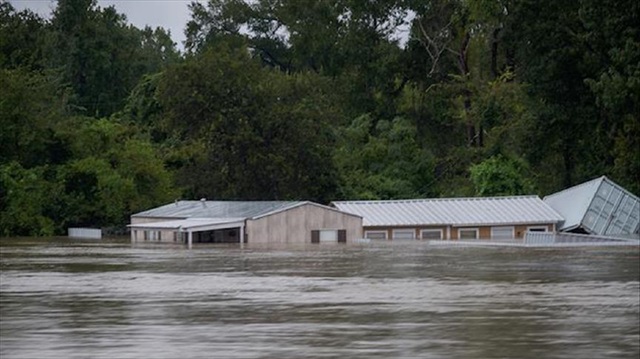
Several southeastern US states brace as powerful northwestbound hurricane approaches US mainland
Irma, one of the most powerful hurricanes ever recorded in the Atlantic, continued on Thursday to swirl over the Caribbean as the U.S. state of Florida braced for "life-threatening impacts" over the weekend.
The hurricane, a top-tier Category 5 storm in the Saffir-Simpson scale, was packing 175 mile per hour (280 kmh) gusts and has caused as many as a dozen deaths so far, leaving destruction in its wake.
Florida Gov. Rick Scott said Thursday, Irma was "much worse and much more devastating on its current path" than Hurricane Andrew, a storm that devastated the state 25 years ago, killing 65 people and causing $26 billion worth of damage.
"If you look at the size of this storm, it's huge," Scott said. "It's wider than our entire state and could cause major and life-threatening impacts on both coasts."
The hurricane made landfall in Turks and Caicos, an Atlantic archipelago that is a British territory. The low-lying region remains at risk of storm surge.
Irma, which is moving on a northwestern route at about 16 mph (26 km), has triggered a state of emergency in Florida, Georgia, the Carolinas, U.S. Virgin Islands and Puerto Rico. The Dominican Republic and Haiti are on alert as Irma is projected to pass by.
The powerful storm first hit the dual-island nation of Antigua and Barbuda earlier this week, leaving the latter in utter ruin, Prime Minister Gaston Browned told the media.
Irma also hit the British Virgin Islands and Anguilla, as well as the French Caribbean.
The storm came a week after Hurricane Harvey caused major damage in the southern U.S. state of Texas and neighboring Louisiana, wiping out as many as 40,000 homes in the Texas city of Houston.
Hello, the comments you share on our site are a valuable resource for other users. Please respect other users and different opinions. Do not use rude, offensive, derogatory, or discriminatory language.
The floor is all yours.








